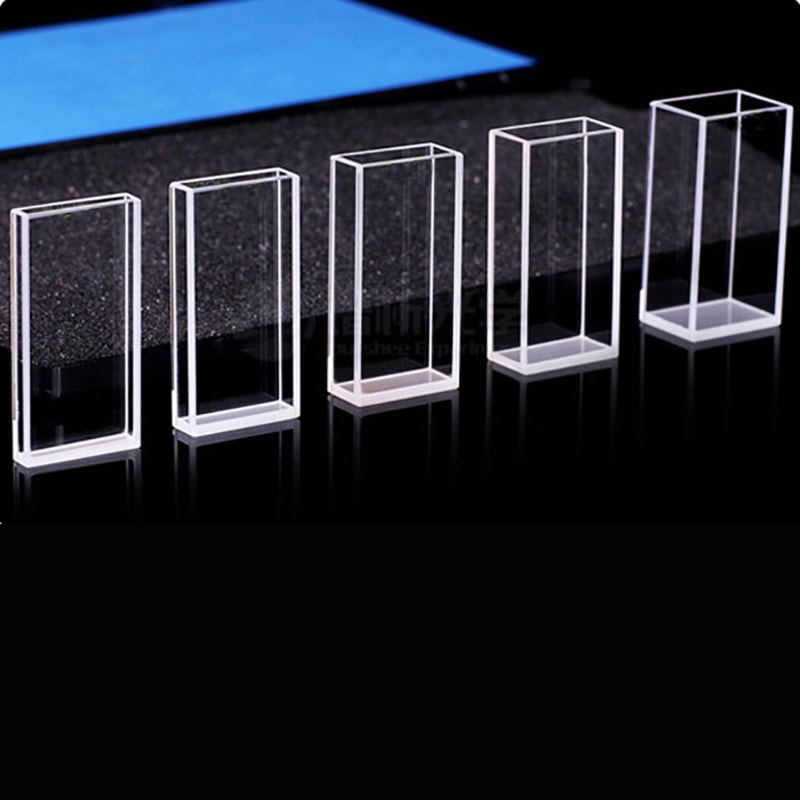The spectrophotometry method is the fundamental element of discovery in science. It reveals the secrets of radiation absorption and transmission at particular wavelengths. The core of the process is the cuvette, which is a small but essential vessel that stores samples to be analysed. Cuvettes are small container that appears unassuming, but its design along with the length of the path as well as the material it is made of, are crucial to obtaining accurate data on purity and concentration. Explore the world of cuvettes as well as their dimensions. They affect the results of all tests.
Power of Cuvette Path length
Imagine that a beam passes through the sample. The result depends on how long the path of the cuvette. This is the distance light travels in the liquid. A standard 1 cm path length cuvette is usually the preferred choice for many labs, balancing between the sensitivity of the instrument and its practicality. What is the significance of this? The longer the path of light, the greater the amount of light absorption. Therefore, the signal will be amplified when using dilute samples. However, for concentrated solutions such as nucleic acids or proteins, a shorter length of path could be a game changer. This method reduces the quantity of dilution that is required to preserve precious samples, as well as reducing preparation times. What can you learn from this? Achieving the right match between path length and demands for the sample is a delicate technique that improves reliability.

Image credit: cuvet.co
Cuvette Dimensions and Size The Cuvette Dimensions and Size is More than you think
Cuvette size isn’t just about the volume of liquid that can fit inside, but also how the vessel is used by the spectrophotometer. Cuvettes come in a variety of volumes and shapes which are suited to particular tasks. For example semi-micro cuvettes, which have smaller dimensions and more robust walls handle tiny samples like a few microliters of a rare biological extract. Thicker walls reduce the space inside, allowing light to flow through a sample that is condensed without loss of one drop. This is a huge improvement over the standard cuvette. It requires less steps to pipette, is less susceptible to errors and produces results that are stable. It’s an ingenious tweak that shows size isn’t just an amount of numbers, it’s also a factor of strategic importance.
The 1cm length of the Path Cuvette The 1 cm Path Length Cuvette is a lab favorite
What is the reason why the 1 cm cuvette path length is widely used in research? This is the perfect spot to conduct biological tests, where every milliliter counts. This classic design gives the same absorbance measurement without overloading the detector. But it’s not a one-size-fits-all model. If you swap it out for a cuvette having an entirely different geometry or length, like one used for emission studies, the results can be wildly distorted. It is crucial to select the correct tool and not just the one you feel comfortable with. A cuvette that is not properly matched can be compared to a poorly tuned instrument.
Material Matters: Beyond Path and Size
Cuvette dimensions tell only half the story material choice seals the deal. The high transmission rates of glass and quartz cuvettes allows light to pass through without interference. They’re strong, durable and suitable for demanding tasks in spectroscopy. On the other hand, plastic cuvettes bring affordability and convenience to the table. There is no need for clean-up or cross-contamination. Just use the cuvettes, then dispose of them. They’re perfect to conduct quick DNA or testing RNA and also for aqueous solutions. What are the tradeoffs? Inaccurate at certain wavelengths. The purists would prefer quartz and pragmatists might choose plastic.
Perfect Practice and Precision
The great thing about cuvettes is in their versatility. The combination of spacers and short lengths of the path allow for the handling of large samples and larger vessels are able to manage large volumes. The clarity of results is influenced by the path length and size, as well as the material employed. The lab is measuring the rare protein. A semi-microcuvette that has a shorter pathway could be able to avoid the dilution issues and produce accurate results quickly. Compare that to a careless swap of cuvettes in the middle of an experiment, and you’ll notice that the numbers drop. This is a reminder that the smallest things can have a significant impact on the spectrophotometry.
Cuvettes are tiny, but they have a significant role to play. They range from the 1 cm cuvette’s length to custom dimensions can provide a bridge between the measurement and the understanding. If you’re seeking pureness or concentration using the correct cuvette, you can turn an excellent measure into a fantastic one proof that precision in science starts with the tools on the ready.
